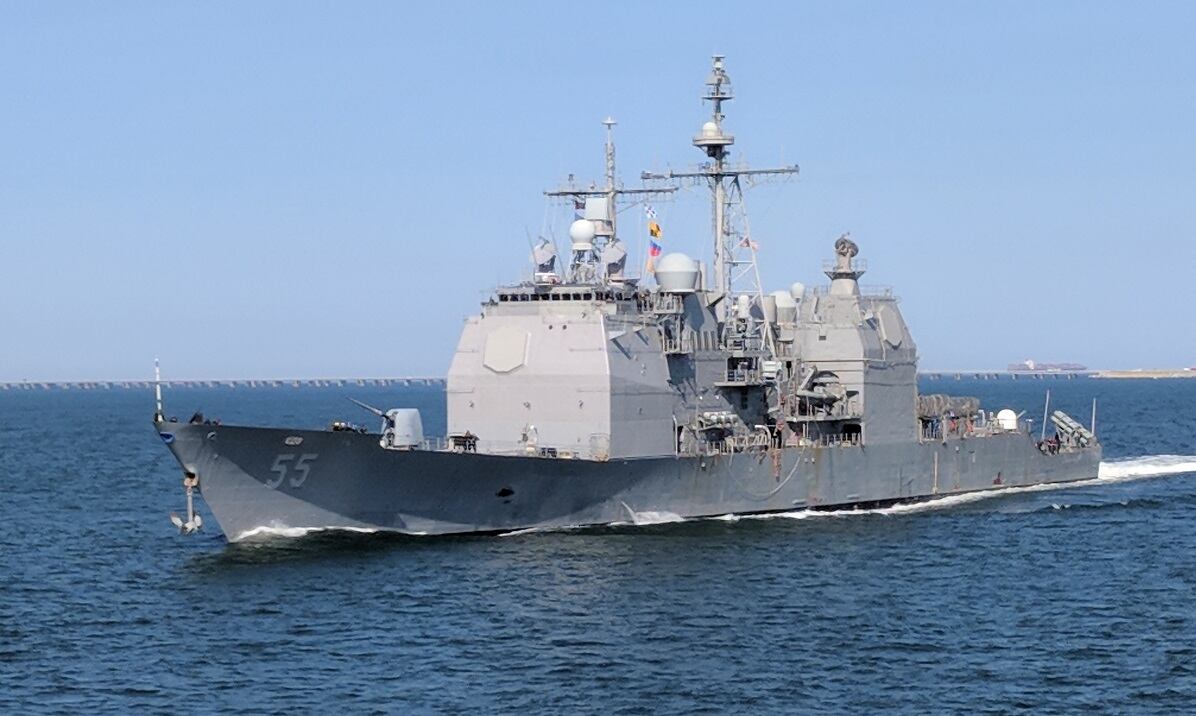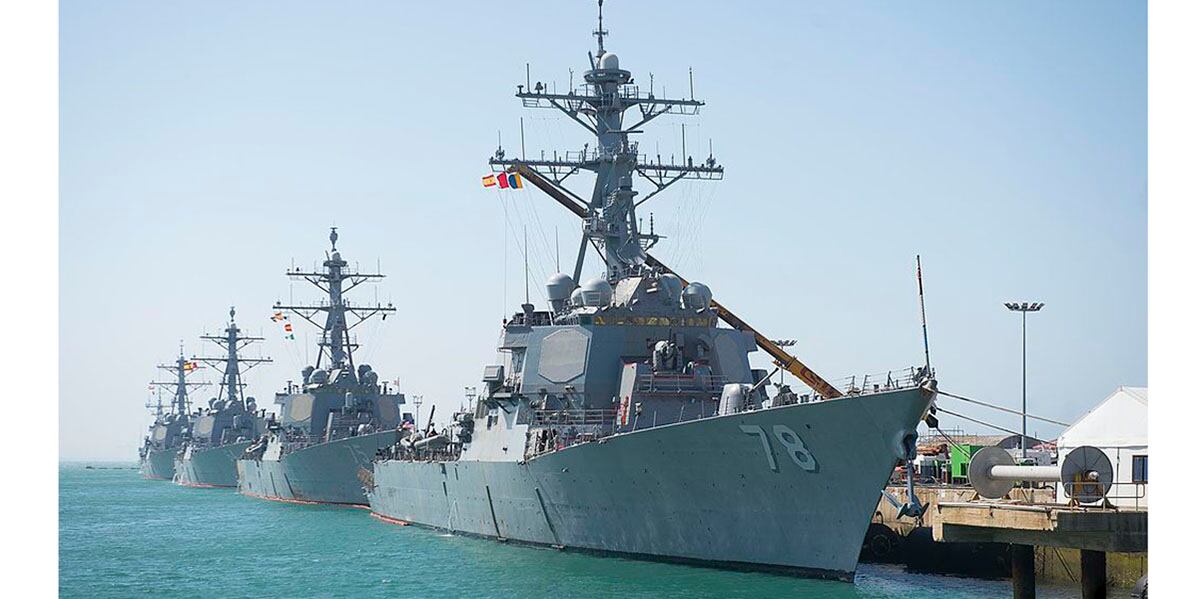WASHINGTON — In a move with sweeping consequences for the U.S. Navy’s battle force, the service is canceling plans to add 10 years to the expected service lives of its stalwart destroyer fleet, a cost-savings measure that would almost certainly hamper plans to grow the size of the fleet.
In written testimony submitted to the Senate Armed Services Committee, the Navy’s Assistant Secretary for Research, Development and Acquisition James Geurts said performing service life extensions on Burkes designed to bring them up from 35-year hull lives to 45 years was not cost-effective.
“Service life extensions can be targeted, physical changes to specific hulls to gain a few more years, or a class-wide extension based on engineering analysis,” the testimony read. “The Navy has evaluated the most effective balance between costs and capability to be removing the service life extension on the DDG 51 class.”
RELATED

The Navy’s destroyers are the workhorses of the fleet, with sailors spending an average of one in every four days underway, the highest rate in the fleet, according a recent report from Defense News’ sister publication Navy Times.
The decision to ax the service life extensions for the Arleigh Burke class comes after years of assurances from Navy leaders that the destroyers would be modernized with an eye to growing the fleet over the coming decades. Navy leaders have offered assurances that the fiscal 2021 budget continues to grow the fleet despite its significant cuts to shipbuilding and existing force structure, but it is unclear how the fleet will continue to grow past the next five years if service life extensions on the earliest Burkes don’t go forward right away.
It would also seem to have significant impact on the current push from acting Secretary of the Navy Thomas Modly to grow the fleet to 355 ships in a decade.
In its FY20 30-year shipbuilding plan, the Navy said extending the lives of the Arleigh Burkes was an imperative to growing the fleet to a battle force of 355 ships. Instead, the cancellation of the service life extensions means that between 2026 and 2034, the Navy is slated to lose 27 destroyers from its battle force.
Those losses would compound the impact of cutting 10 ships from the five-year projections in the FY21 budget, including five of the 12 proposed Flight III Arleigh Burke-class destroyers from the FY20 budget and a Virginia-class attack submarine.
The Defense Department has yet to submit its FY21 30-year shipbuilding plan, which means that it’s impossible to tell how the Navy thinks these cuts would affect its total ship count in the years when it would lose Burkes at a rate of more than three per year. But the Burke retirements would begin in 2026 or 2027, years just after the service completed shedding 13 cruisers from its fleet, leaving just nine of the Navy’s largest combatants in the fleet.
In a statement, Capt. Danny Hernandez, spokesman for Geurts, said there are a lot of variables in getting the fleet to its goal of 355 ships, but that the Navy’s top priority is keeping the recapitalization of its retiring Ohio-class ballistic missile submarines on track.
“Like Navy leaders have stated during testimony, the tradeoffs were complex to get the right balance,” Hernandez said.
RELATED

Service lives
According to a Naval Sea Systems Command document obtained by Defense News in 2018, the earliest Arleigh Burke destroyers — 27 so-called Flight I and early Flight II destroyers — have an expected hull life of 35 years. The lead ship, the Arleigh Burke, was commissioned in 1991, meaning its hull life is up in 2026.
DDG-51 through DDG-78 — the Flight I destroyers — were commissioned between 1991 and 1999. Later models — Flight IIA — have 40-year hull lives.
In 2018, then-Deputy Chief of Naval Operations for Warfare Systems Vice Adm. Bill Merz told USNI News that there were distinct advantages to upgrading the entire class, and that instead of just a combat systems modernization aimed at boosting ballistic missile defense systems, the ships would get the full hull and mechanical upgrades that would extend the ships out to 45-year service lives.
“This is an HM&E [hull, mechanical and electrical] extension, but every destroyer is already in the modernization pipeline, so every destroyer will be modernized,” Merz said. “The modernization they receive that’s already programmed may carry them through.
“Obviously the threat’s going to get a vote on that, but one of the beauties is instead of doing an individual ship-by-ship extension and extending the entire class, now we have the visibility to actually plan for that. We can pace it, plan it, fund it efficiently instead of one-and-done, one-and-done, one-and-done. We can be a lot more deliberate about how we handle this class.”

In testimony that year, Merz said ballistic missile defense was the biggest requirement driving the retention of the DDGs to 45 years. Compounded with cuts to the Flight III destroyers, it seems likely that the Navy by 2034 will have a significantly reduced ballistic missile defense capability with at least 32 fewer ballistic missile defense-capable destroyers in the fleet, if this budget is enacted.
When asked during its FY21 budget rollout if cutting five Flight III DDGs corresponds to a reduction in demand for ballistic missile defense-capable ships, Navy budget director Rear Adm. Randy Crites told reporters it was a decision based “strictly [on] affordability.”
The Navy has in recent years declared the Arleigh Burke hull design maxed out, with the Flight III being packed to the gunwales with power and cooling to support the inclusion of Raytheon’s SPY-6 air and missile defense radar. Future combatants will have to accommodate more power generations and storage to support systems such as laser weapons and rail guns.
The excess electrical power capacity in the Ford-class aircraft carrier, for example, is one of the main reasons the Navy considers the new class valuable even as aircraft carriers become more vulnerable to high-speed, anti-ship missiles.
Bryan Clark, a retired submarine officer and senior fellow at the Hudson Institute, said the cuts were a necessary step. Clark recently authored a study with the Center for Strategic and Budgetary Assessments that called for canceling the DDG service life extensions.
“It’s crazy to throw good money after bad for a bunch of ships you say you don’t need,” Clark said. “I think the Navy is coming to grips with the fiscal realities; the unsustainable nature of their current plan; and the recognition it is going to have a need for fewer large surface combatants in the future and needs to husband its resources to build a larger fleet of smaller surface combatants. Those are going to be the bulk of the distributed force they intend to have.”
David B. Larter was the naval warfare reporter for Defense News.








